Just three miles outside the bustling tourist town of Newquay in Cornwall, lies a small village by the name of St. Newlyn East. You won’t find it mentioned in the tourist guides, as on the surface, there would appear to be no real reason to pay a visit. Yet this sleepy, rural settlement holds a wealth of herbal folklore waiting to be found by anyone brave enough to explore this magical place. Today’s botanical walk meanders through an enchanted wood and ancient tin mines.
Our meeting point?
The legendary cursed fig tree of St. Newlyn East.
The Tree Within the Wall
Although some might consider it to be rather an odd and macabre pastime, I’ve always enjoyed walking around old cemeteries. Apart from the spectacular array of plants that can be found, it’s fun to conjure up stories about the lives of the people buried there.
I admit, at times I can suffer from what some might call “an over-active imagination,” but I’ve often fancied writing a book about various fictional characters, and how they found their final resting place in the graveyard.
During lockdown, I started writing a ghost story about one of the graves I found in the churchyard at St. Columb Major.
“Mary, Mary you’re not dead, Wake-up now! Get out of bed!”
After a few sleepless nights dreaming of ghostly visitors, I eventually went back and made an offering of flowers just in case.
After that, the nightmares stopped. I image that just like the living, dead people don’t particularly like strangers making up stories about them.
Anyway, I should have learned from previous experience, but as someone who’s always drawn in by a good yarn, when I heard about the story of the cursed fig tree growing out of the wall of the church at St. Newlyn East, I had to go and pay it a visit.
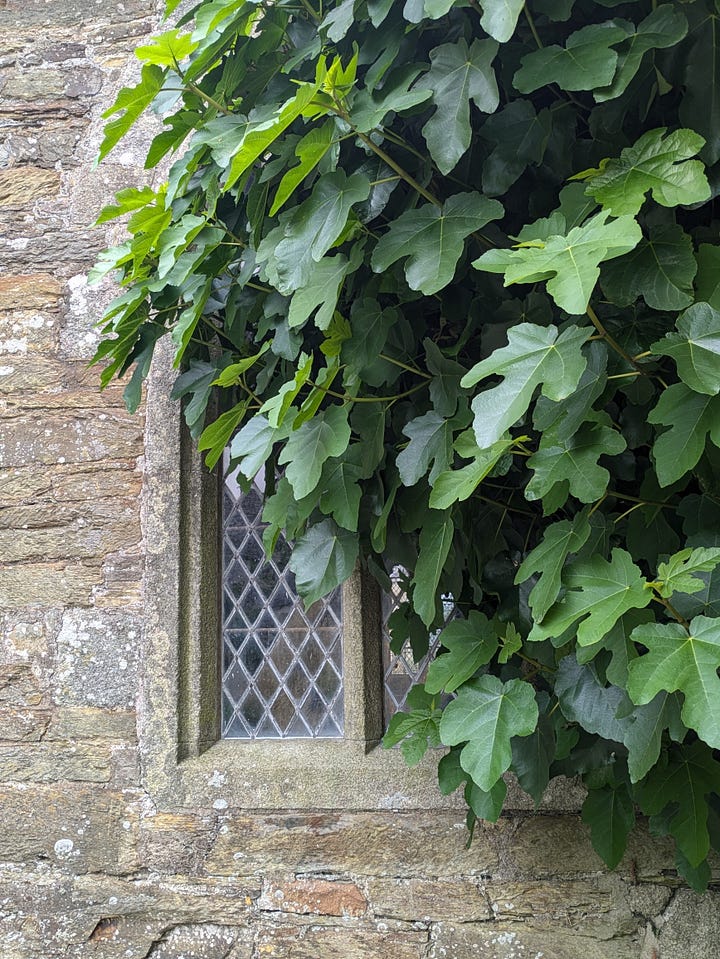
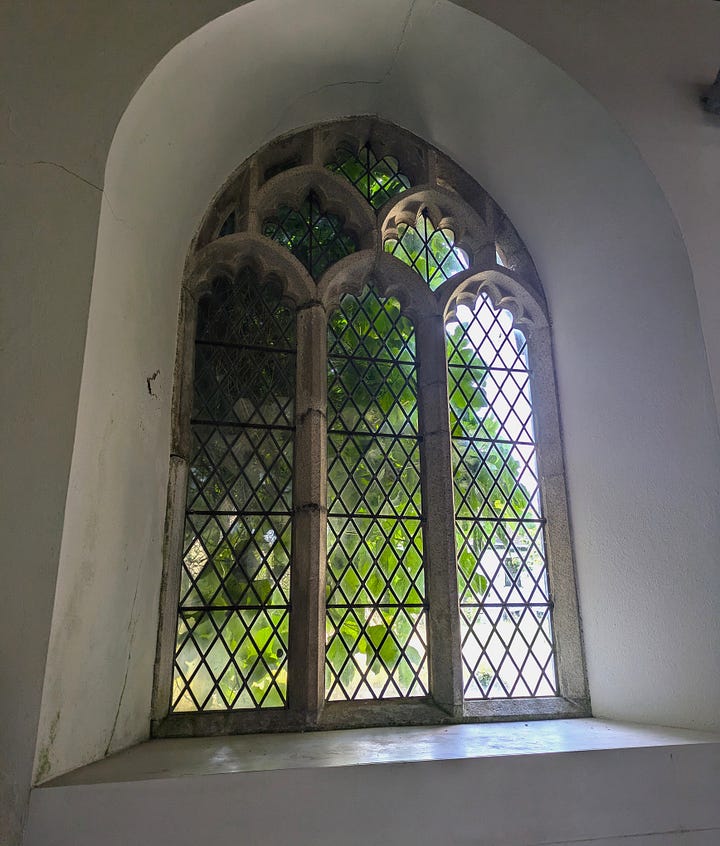
Tall tales have a way of getting taller in the telling. Legend has it that the tree is protected by St. Newlina, and that anyone who touches it will die within the year.
The story is kept alive by this local rhyme:
In ancient days Newlina came, the Saint who gave this place a name,
Her staff she planted and she prayed “let here a church to God be made,”
This fig tree is her staff, folks say. Destroy it not in any way,
Upon it lies a dreadful curse; who plucks a leaf will need a hearse.
I wanted to find out if there was any truth to the tale, and so arranged to meet with the caretaker of the church, a lovely lady called Linda, who had lived in the village for over 70 years. She told me that the story was true, and that as a child she’d always been warned never to touch the tree. However she had a conundrum. As part of her responsibility as church warden, she had to ensure it didn’t become overgrown and cause damage to the ancient wall, which could fall and ruin the stonework (or, God forbid, injure an unwitting parishioner.)
From time to time she had to ask someone from the council to come and prune it.1 Standing underneath the tree at that moment, I thought it looked rather beautiful and quite healthy. I had a strange urge to touch one of the leaves, but quickly caught myself, and instead, made a mental note to say a quick prayer of protection as soon as I left the churchyard.
I’d arranged to meet a friend for a coffee and go for a walk up through the woods, and so I briefly glanced at my watch to check the time.2 To my absolute horror, I saw it had stopped about fifteen minutes ago; just around the time we started talking about the tree.
A Walk Through the Woods
What better way to follow up an encounter with a haunted tree, than with a ramble through some spooky woods!
The afternoon was turning into a beautiful, late Summers day, and the light from the trees cast dappled shade on the ground. The air of magic in the ancient woodland soon drew me into a tranquil lull. It felt good to be alive!
Let me give you a snapshot of the sorts of things that can be found at this time of year in the ancient Cornish woodlands;
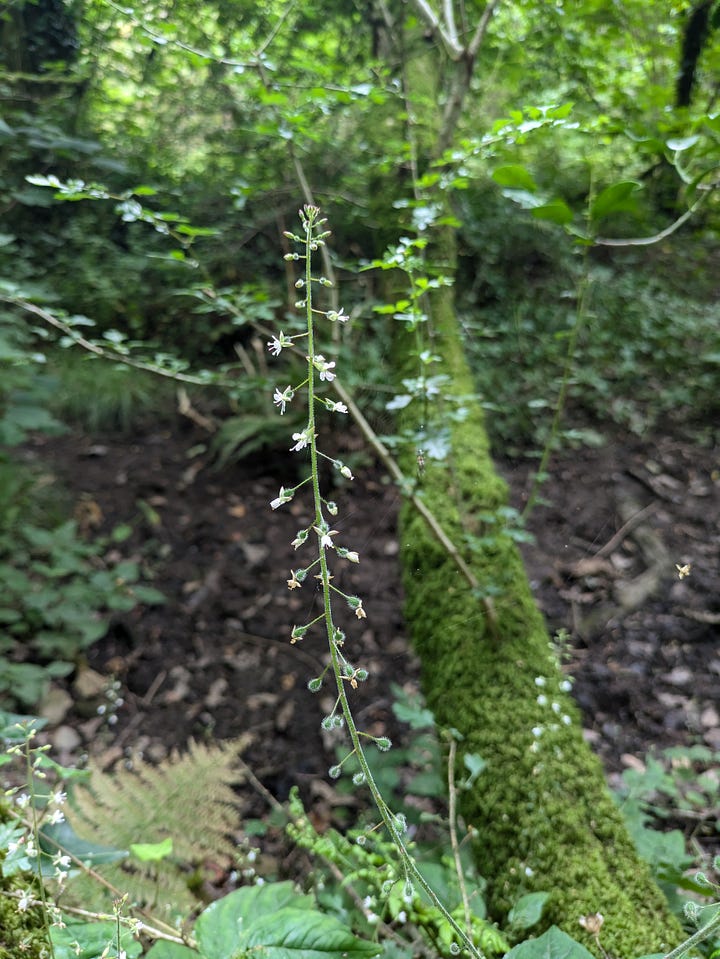
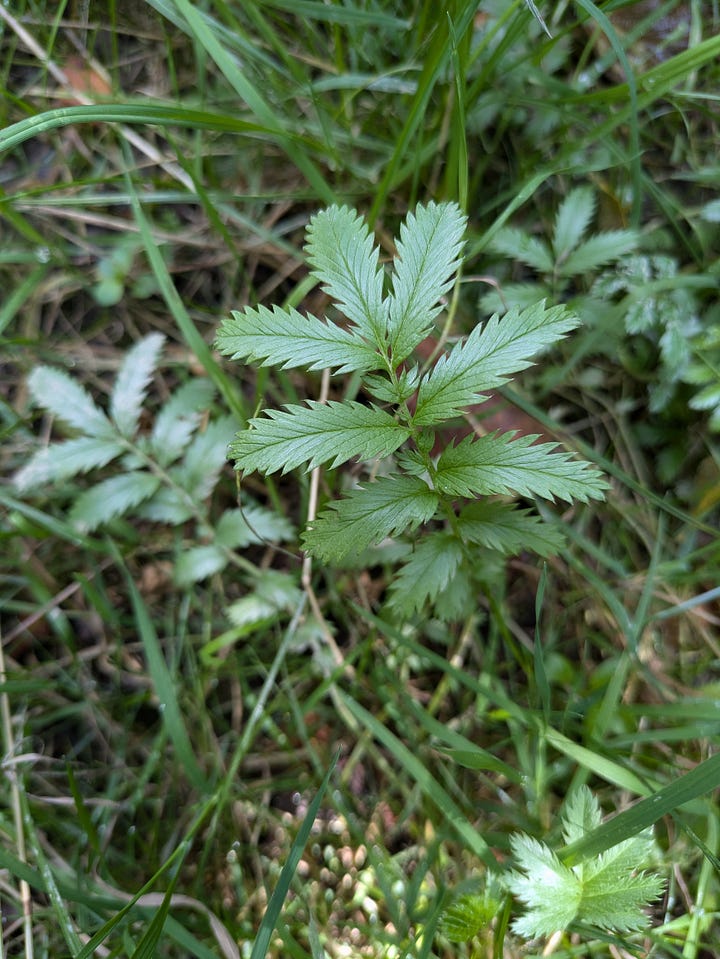
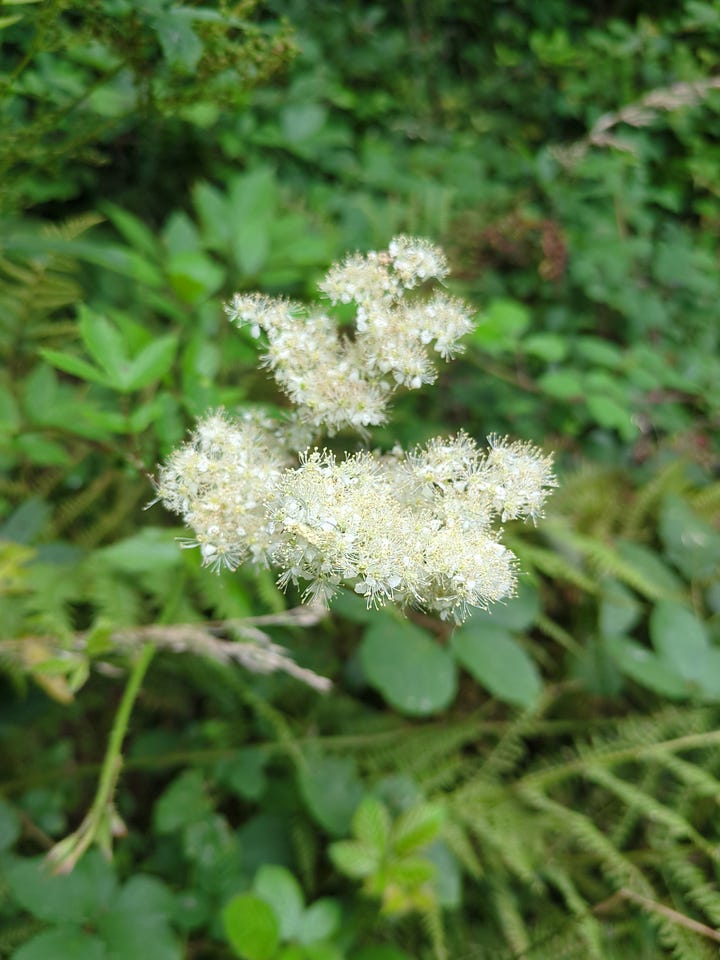
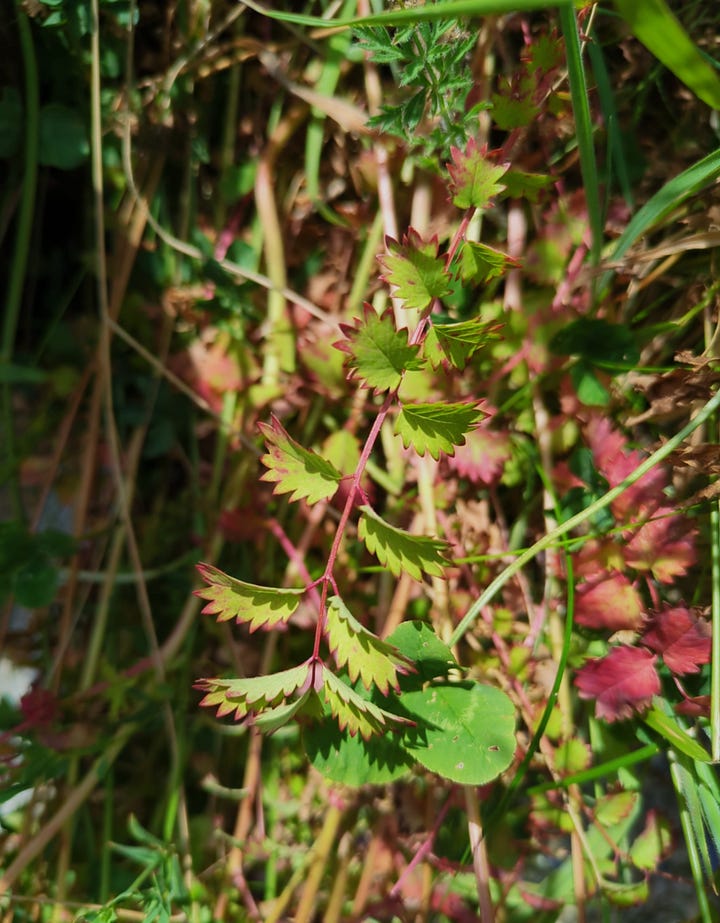
Enchanter’s Nightshade (Circaea lutetiana) is a pretty little flower from the willow-herb family. The Latin name Circaea is in honour of Circe, an enchantress sometimes depicted as the Greek goddess of magic, who was known for her knowledge of herbs. Despite it’s ominous name, the plant is not considered to be poisonous. Records show it has been used treat wounds, and as a flavouring in Austrian tea. In the Scottish Highlands it was thought to be an aphrodisiac. I’ve never personally used this plant in any medicine making experiments. This is partly because it’s so pretty to look at, I prefer to leave it in situ, but mostly because it’s so weedy, you’d need quite a lot of plant material to yield a decent strength preparation.
Salad Burnet (Sanguisorba minor) is also known as poor man's pepper - probably because the leaves are aromatic (some say nutty with a hint of cucumber,) and often used to flavour dishes.3 It was taken to New England in the Pilgrim Father's plant collection and called Pimpernel. The Tudors used to plant it along herbaceous borders so the scent rose up when trodden on. The Latin name Sanguisorba comes from sanguis, meaning 'blood' and sorbere, meaning to 'soak up,' another reference to its ancient medicinal use of staunching wounds.
Meadowsweet (Filipendula ulmaria) is unmistakably recognizable by it’s heady aroma. One of the very best digestive remedies available, it soothes and coats the mucous membranes that line the digestive tract, helping to reduce the incidence of heartburn caused by acid reflux. One of my favourite herbal medicines, it combines well with marshmallow, chamomile and linden blossom, however, caution should be used by folks taking blood thinning medications, Warfarin or aspirin. It also needs to be taken away from mineral supplements, and is unsuitable for patients with salicylate sensitivity.
Hunting for Crystals
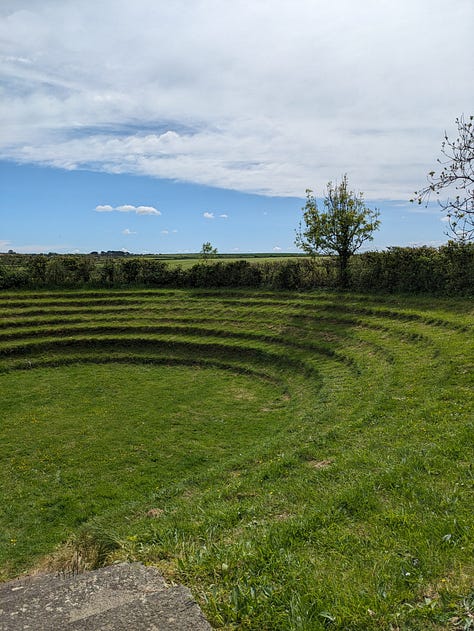
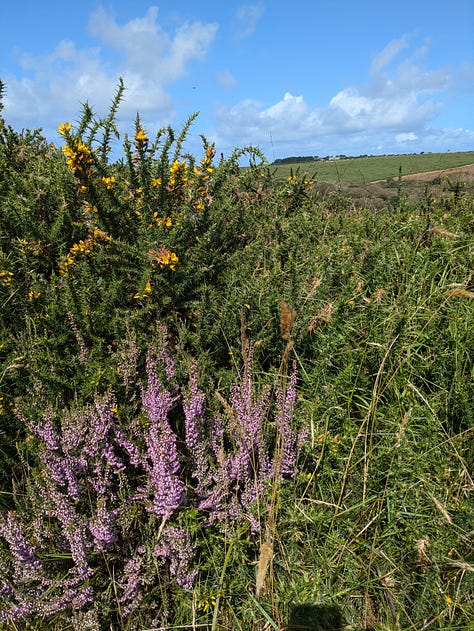
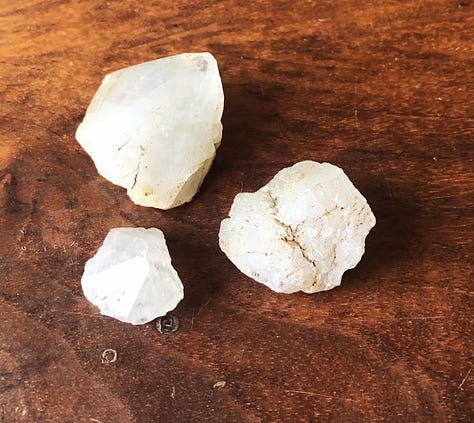
Once through the other side of the woods, we found ourselves in an area locally known as the Downs. This truly is an eerie feature and more reminiscent of a lunar landscape, or scene from an old country and western movie than the outskirts of a tiny Cornish village. This land was where local people once came to work in the tin mines. Unfortunately, it’s also known as the scene of one of Cornwall’s worst ever mining disasters.
The 9th July 1846 started out to be a bright and sunny day, but around midday, heavy clouds formed in the north-west and gathered directly over the East Wheal Rose mine.
A tremendous thunderstorm began, and torrential rain fell on the mine and surrounding hills. Soon, the whole area was under water, as a flood poured down from the southern hills, and torrents began to pour down the mine shafts. The first warning for the unfortunate miners below, was when their candles were blown out by a tremendous gale. In utter darkness and surrounded by the roar of rushing water, men and boys struggled to find a way out.
It must have been absolutely terrifying.
A plaque inside St. Newlyn church contains the names of the 39 young men who perished. Some of the victims are believed to be buried in the graveyard.
Walking around the area as the sun goes down is a peaceful, yet other-worldly experience. Not a sound can be heard bar the woosh, woosh, wooshing of the sails of the wind farm high in the hills. The dry, arid landscape is the perfect home for heather, gorse and plantain, (as well as the adders that are also sometimes seen basking under the warm rocks during the heady heat of the Summer months.)
If you’ve got a keen eye, and are suitably dressed for wading through muddy fields after a heavy downpour, you might be lucky and find some rough quartz crystals strewn along the deserted pathways. These treasures have surfaced from deep within the old mines, and are a reminder of Cornwall’s rich mining heritage.
Other Found Treasures
I had to end today’s post on a somewhat lighter note, and thought I’d share this marvellous photo of what looks like a giant Triffid growing on the footpath that leads back to the village.
This impressive specimen of Mullein (Verbascum thapsus) is instantly recognisable by its magnificent yellow spike and silky soft leaves. It has some very helpful herbal properties, and is a mainstay remedy in my dispensary. (For example, combined with garlic, makes a soothing antimicrobial oil to help reduce the pain and inflammation of ear infections.)
Today’s post has been strongly influenced by two things:
I’m currently reading “Help the Witch” a brilliant book I picked up from my local library which draws deeply from the well of village gossip. The author is Tom Cox, who writes an excellent Substack called
If you’ve enjoyed today’s post, you’ll be certain to resonate with his own witty musings about everyday life in the countryside. Do go check him out.I’ve also been staying up quite late watching “West Country Tales” an early 1980s supernatural drama series based on real-life experiences sent in by viewers in response to a BBC appeal. Of the hundreds of letters received, 13 stories were selected and turned into TV scripts. One of my favourites is entitled “The Poacher.”
I hope you’ve enjoyed today’s spooky herbal yarn. If you fancy reading more posts like this, please do leave a reply of “Fig Tree” in the comments!
Alternatively, if you’re local (or visiting Cornwall,) and would like to join me for a guided tour of the village and woods, hit the button below.
Here’s what one person had to say about her experience:
“Sarah is an excellent walk leader and her knowledge of plants and their medicinal uses is encyclopaedic! I was fortunate to preview this gently-paced walk recently and was surprised at the healing power of some common-place plants – and others which I couldn’t name. Sarah is well versed in local folk-lore and history, pointing out features along the route. The stop at the dairy café near the end of the walk was popular with our small group. A very interesting and absorbing morning, which I can highly recommend.”
(Sue, Cornwall.)
Until next time!
The first time I visited the church I was horrified to see a tree surgeon hacking away at the fig with a pair of shears. The lady in the butchers shop opposite the churchyard mentioned that the man was aware of the curse and said he wasn’t bothered with “old wives tales.”
While out on walks I like to wear an analogue watch, this is partially to keep an eye on the tide times as well as avoiding the need to keep getting my phone. I had replaced the battery just two weeks ago. The terrifying thing was that the watch began to tick again (and has continued to do so) the moment I got back into my car and left the village.
The leaves are sometimes used to garnish Gin & Tonic. The plant grows on the grounds of my workplace at Newquay Orchard, and are often included in the fresh salads served in the café.






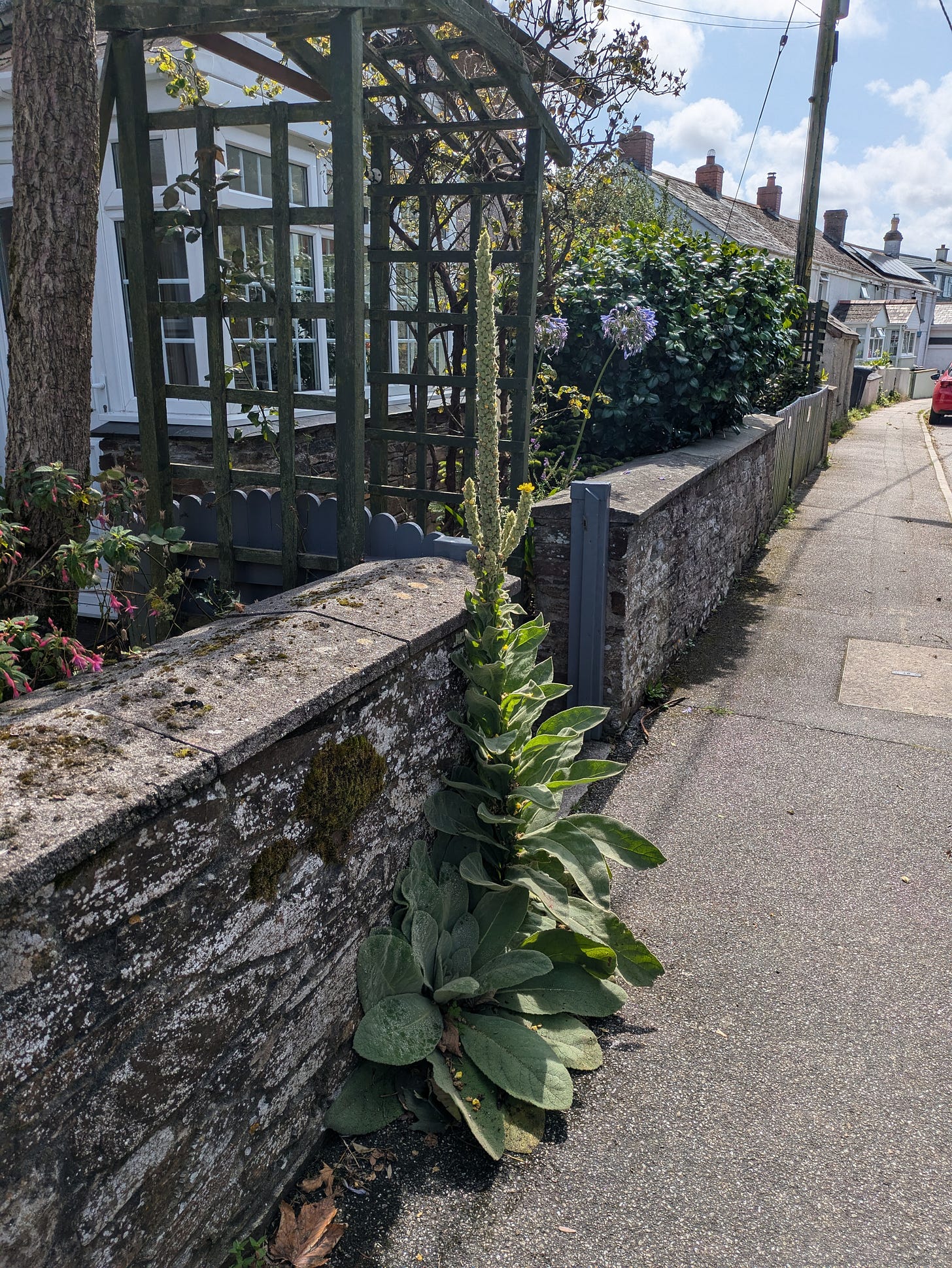
'Fig tree'! I enjoyed this so much!
Wish I could join you